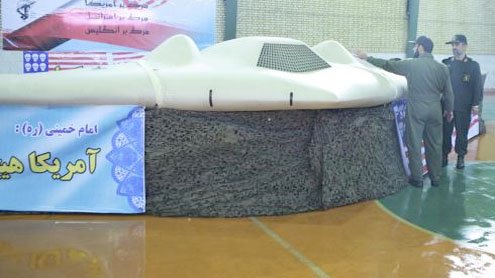
Iran said Sundaythat it had reverse-engineered an American spy drone captured by its armedforces last year and has begun building a copy.
Gen. Amir Ali Hajizadeh, chief ofthe aerospace division of the powerful Revolutionary Guards, related what hesaid were details of the aircraft’s operational history to prove his claim thatTehran’s military experts had extracted data from the U.S. RQ-170 Sentinelcaptured in December in eastern Iran, state television reported Sunday.Tehran has flaunted the capture ofthe Sentinel, a top-secret surveillance drone with stealth technology, as avictory for Iran and a defeat for the United States in a complicatedintelligence and technological battle.
U.S. officials have acknowledgedlosing the drone. They have said Iran will find it hard to exploit any data andtechnology aboard it because of measures taken to limit the intelligence valueof drones operating over hostile territory.Hajizadeh told state television thatthe captured surveillance drone is a “national asset” for Iran and that hecould not reveal full technical details. But he did provide some samples of thedata that he claimed Iranian experts had recovered.
“This drone was in California inOct. 2010 for some technical work and was taken to Kandahar in Afghanistan inNov. 2010. It conducted flights there but apparently faced problems and (U.S.experts) were unable to fix it,” he said.Hajizadeh said the drone was takento Los Angeles in Dec. 2010 where sensors of the aircraft underwent testing. Heclaimed that the drone was in use in Pakistan two weeks before Al-Qaida chiefOsama bin Laden was killed by U.S. Navy SEALs in the country’s northwest.
“If we had not achieved access tosoftware and hardware of this aircraft, we would be unable to get thesedetails. Our experts are fully dominant over sections and programs of thisplane,” he said.There are concerns in the U.S. thatIran or other states may be able to reverse-engineer the chemical compositionof the drone’s radar-deflecting paint or the aircraft’s sophisticated opticstechnology that allows operators to positively identify terror suspects fromtens of thousands of feet in the air.
There are also worries thatadversaries may be able to hack into the drone’s database, as Iran claimed tohave done. Some surveillance technologies allow video to stream through tooperators on the ground but do not store much collected data. If they do, it isencrypted.Media reports claimed this week thatRussia and China have asked Tehran to provide them with information on thedrone but Iran’s Defense Ministry denied this. – Khaleejnews











